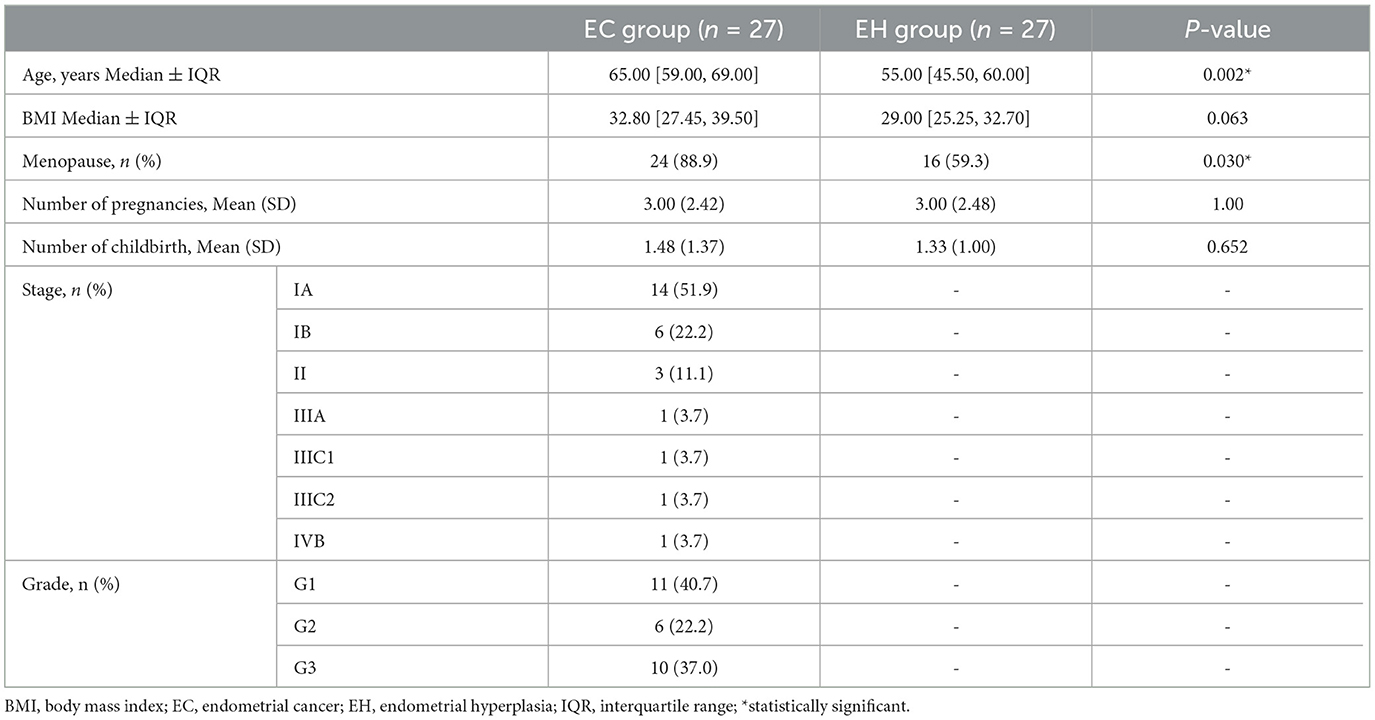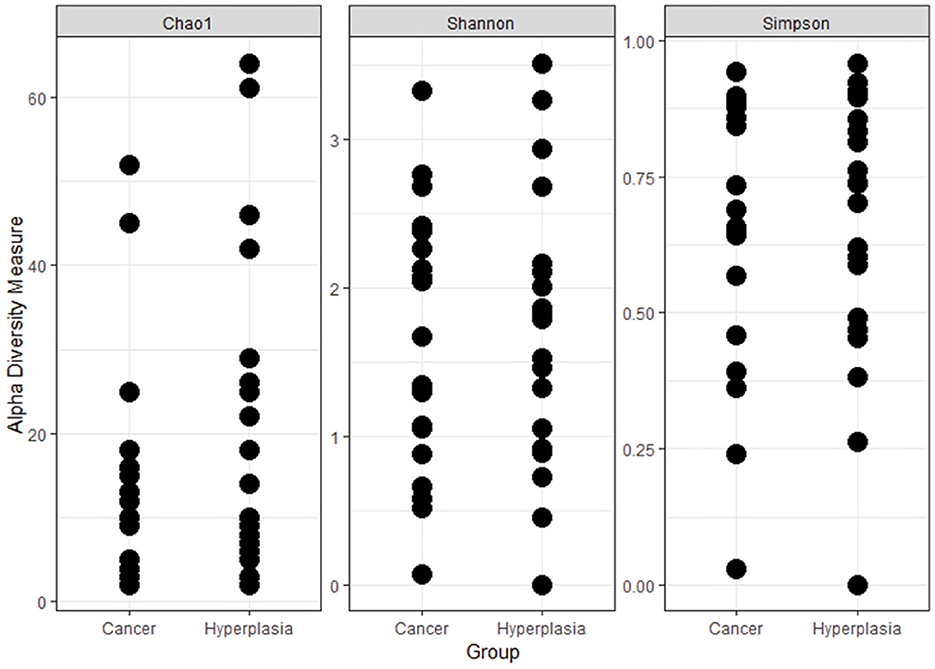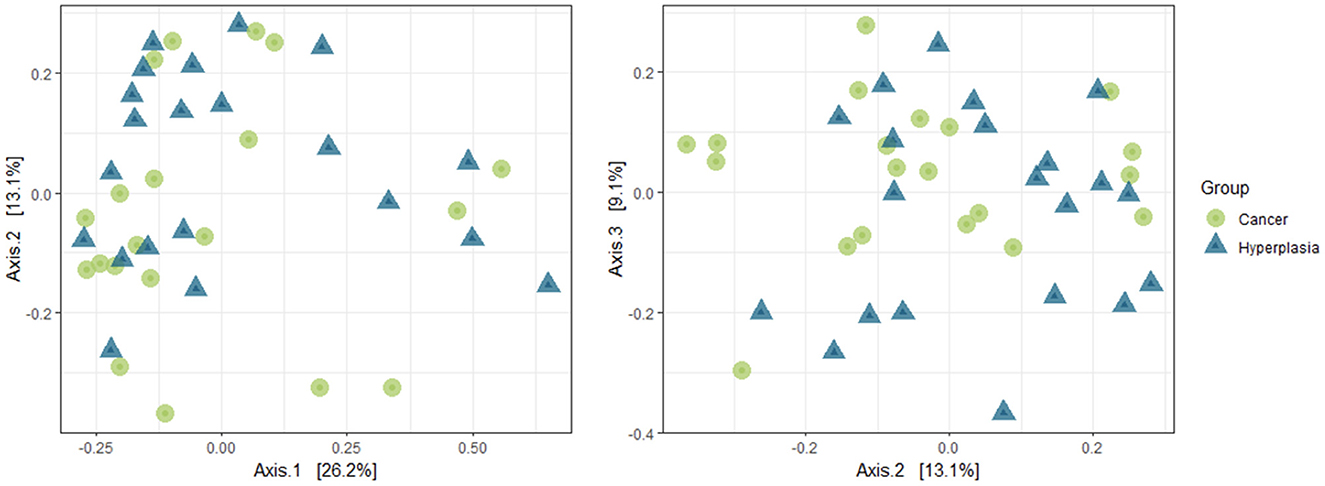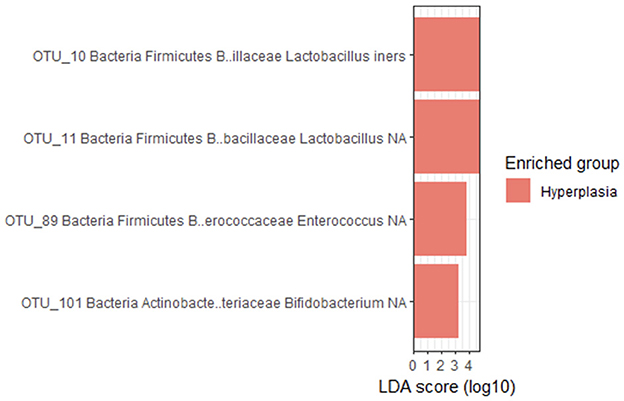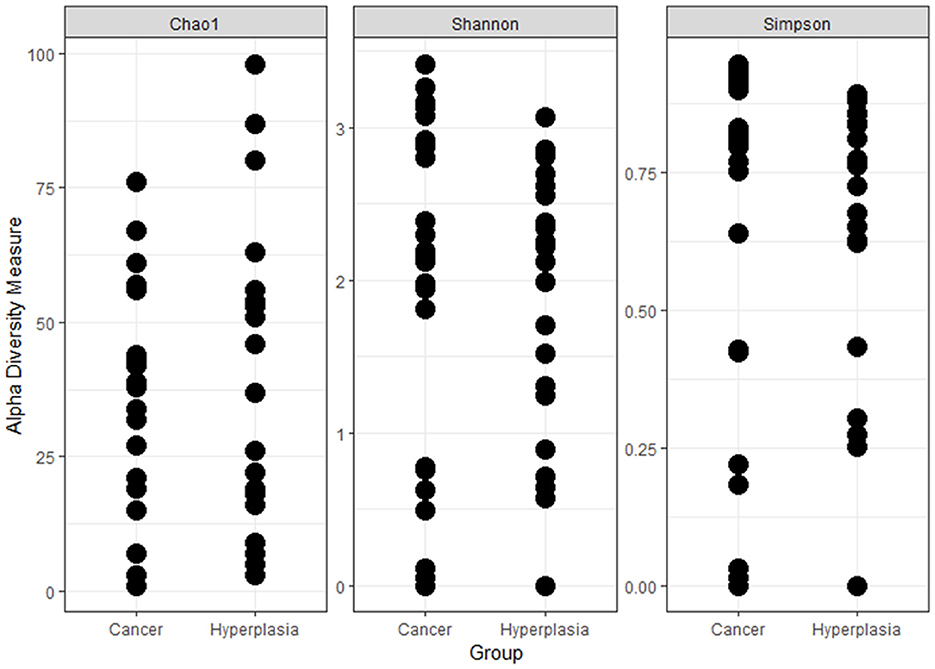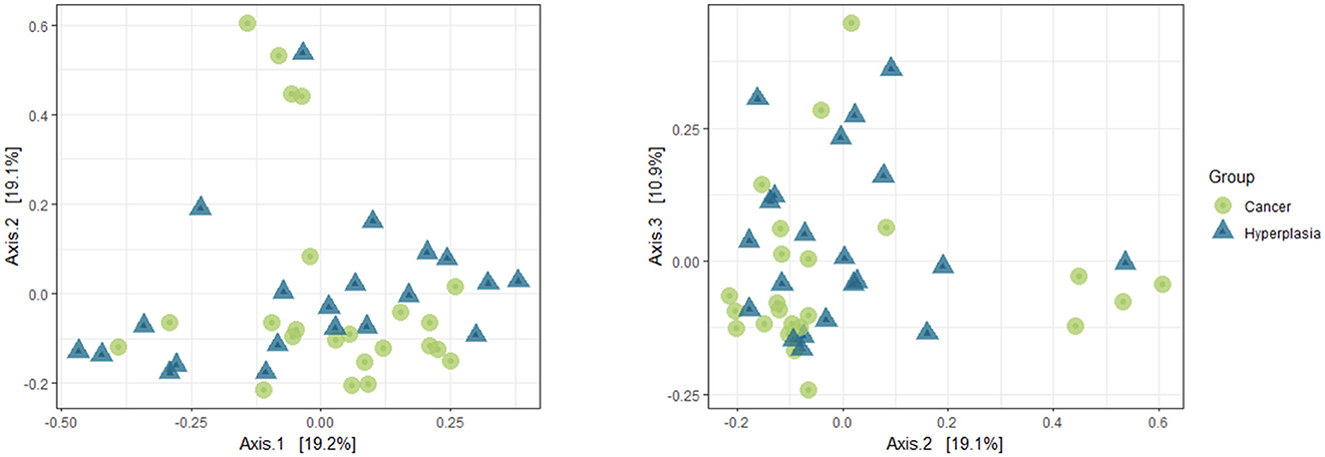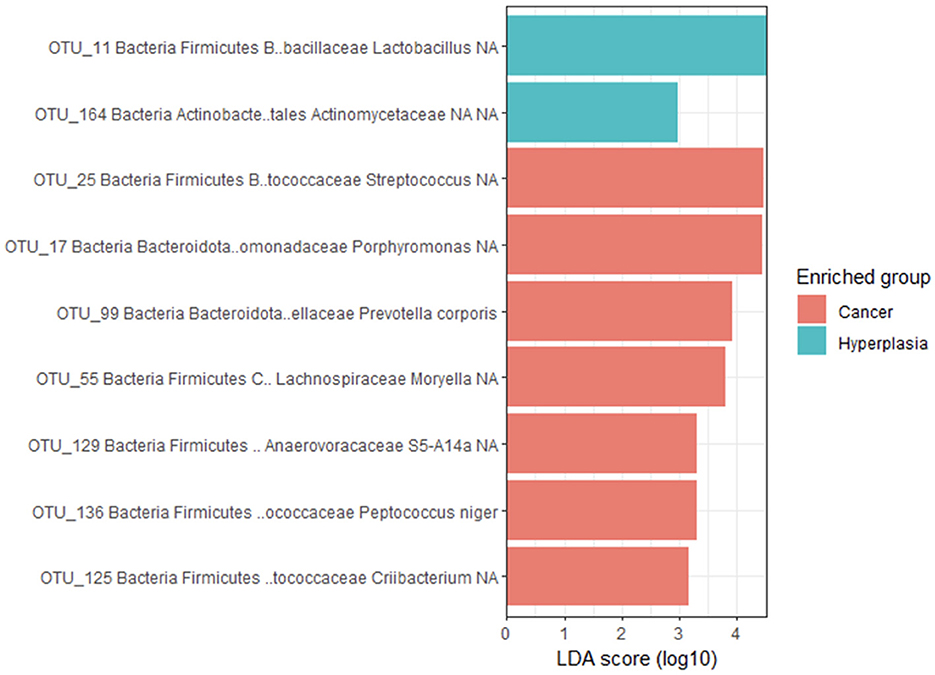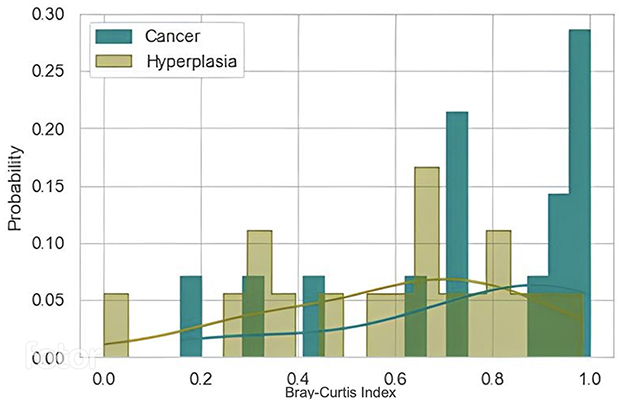- 1Almazov National Medical Research Centre, Saint-Petersburg, Russia
- 2Division of Obstetrics and Gynecology, Department of Women's and Children's Health, Karolinska Institutet, Stockholm, Sweden
- 3St Petersburg University, Saint-Petersburg, Russia
- 4North-Western State Medical University named after I.I. Mechnikov, Saint-Petersburg, Russia
- 5National Medical Research Centre of Oncology named after N.N. Petrov, Saint-Petersburg, Russia
- 6School of Medical Science, Faculty of Medicine and Health, Örebro University, Örebro, Sweden
- 7Institute of Experimental Medicine, Saint-Petersburg, Russia
Endometrial cancer remains one of the most common malignancies in women, and its incidence is particularly increasing in developed countries. Despite the well-known promotive role of excessive exposure to estrogen, many other details of the pathogenesis of endometrial cancer remain unknown. Recent studies have elucidated the emerging role of the resident microbiota in the progression of various diseases, including cancer. Next-generation sequencing demonstrated that the uterine cavity, previously considered sterile, contains a composition-rich microbiota. In this work, we determined the differences in the composition of the intrauterine microbiota between patients with endometrial cancer and its precursor—endometrial hyperplasia.
Introduction
Endometrial cancer (EC) is the most common gynecological malignancy in developed countries, second only to cervical cancer in the developing part of the world. Unlike many other cancers, the incidence of EC and associated mortality have been increasing in recent decades (1). Most EC cases (around 80%) are histologically endometrioid, present early, and have a more favorable prognosis. These cases are known under the group name Type 1 EC tumors, first described by Bokhman (2). The rest - serous, clear cell, mucinous, and several others - were grouped under the name Type 2 EC tumors. Type 1 tumors usually contain sex steroid receptors and arise from hyperplastic preconditions, such as endometrial hyperplasia (EH). Their development is traditionally related to unopposed exposure to estrogens. The latter may be the consequence of the action of risk factors, including, but are not limited to, obesity, nulliparity, estrogen therapy, etc.
However, in light of new publications and the discoveries of the new genomic atlas, endometrial cancers seem to be more heterogeneous (3). The four distinct subtypes were described: DNA polymerase epsilon ultra-mutated, microsatellite instability hypermutated, copy-number low, and copy-number high. The recent studies suggest that microbiota can also play role in EC tumorogenesis (4, 5). While the vaginal microbiota is well-known to be active and dominated by the Lactobacilli genus, the uterine cavity was previously considered sterile (6, 7). The advent of next-generation sequencing (NGS) technologies revealed that the uterine microbiota is more scarce than the vaginal (103-105 times lower), but simultaneously more diverse (8). The origin of the intrauterine microbial community and its role in health and disease is an emerging area of research. For instance, recent studies suggested that the endometrial microbiota can modulate uterine receptivity and therefore influence fertility (9, 10). Furthermore, the composition of the uterine microbiota has been associated with various gynecological conditions, including endometriosis, dysfunctional menstrual bleeding, and cancer (8, 11). The current study was conducted to provide a comparative analysis of the reproductive tract microbiota between patients with EH and EC.
Materials and methods
Study group
We included patients who were referred to the Almazov National Medical Research Center from March 2020 to November 2021, due to thickened endometrium on ultrasound and/or abnormal uterine bleeding. The samples were collected and stored prospectively (see below) but were not included in the study before the final histopathological diagnosis. Then the patients were grouped in either of two groups—EH or EC.
Patients were advised against vaginal douching or using vaginal suppositories. None of the patients had previously received menopausal hormone therapy. The exclusion criteria also included tamoxifen use, inflammatory bowel disease, antibiotic use within previous 3 months.
Sample processing
Samples were collected according to the following method. All procedures were performed in a sterile environment within the operating room by the surgeon. High vaginal swabs (from the posterior fornix) were collected before applying the disinfectants shortly after administering the anesthesia. Routine pre-surgical douching with betadine was then performed. Endometrial samples were collected using disposable tools, Endometrial Tao Brush™ by Coop Medical. It has a protective shield, which helps avoid cross-contamination with the lower parts (vagina, cervical canal) and was previously described as a reliable tool for collecting intrauterine samples (12). The samples were then quickly delivered for storage in liquid nitrogen.
DNA extraction and 16S rDNA sequencing
Total DNA was extracted using the FlexiGene DNA Kit (Qiagen, Hilden, Germany) following the manufacturer's instructions. DNA quality was assessed using a NanoDrop 1000 spectrophotometer (Thermo Fisher Scientific, Waltham, MA, USA). The DNA was stored at -20°C until use.
Libraries were generated with NEXTflex 16S V4 Amplicon-Seq Kit 2.0 (PerkinElmer, Inc., Waltham, MA, United States), according to the manufacturer's instructions. Sequencing was performed on the MiSeq platform with MiSeq Reagent Kit v2 (250 bp × 2) (Illumina Inc., San Diego, CA, United States).
Bioinformatic analysis
Files with forward and reverse reads were subjected to primary quality control using the FastQC v0.11.9 (13) and MultiQC v1.14 (14) programs. Filtering of data with low quality value, removal of adapter sequences and primers was performed using the trimmomatic program v0.39 (15) (adapters: 2:30:10 SLIDINGWINDOW: 4:15 HEADCROP (primer length) MINLEN 150). Then a second quality analysis was carried out. The reads were analyzed using the DADA2 package for R v1.26.0 (16). Since the merging of forward and reverse readings led to a large reduction in the number of sequences, only direct readings were used for analysis. Quality control was repeated with the DADA2 package, chimeric reads and low-quality readings were removed. The obtained amplicon sequence variants (ASVs) were clustered using the mmseq2 v 13.45111 (17) with the identity parameter - 99% and 97%, and coverage of 80% to obtain operational taxonomic units (OTUs). The taxonomic analysis of the obtained sequences was carried out in the DADA 2 package based on the SILVA v138.1 database.
Alpha and beta diversity was compared using the phyloseq v1.42.0 package (18). Alpha diversity was evaluated according to the Chao1, Shannon and Simpson criteria. To visually assess beta diversity, a principal coordinate analysis (PCoA) was performed using the Weighted UniFrac algorithm. The LEfSe package microbiomeMarker v1.4.0 (19) was used to detect the bacterial markers that contribute the most to the difference between the two groups.
Statistics
Statistical analysis was carried out using R packages. Permutational multivariate analysis of variance (PERMANOVA) was performed using the vegan v2 package.6.4 (20), the adonis2() function. Mann-Whitney-Wilcoxon test were used to compare the distribution of the continuous variables between the groups. Chi-square was used to test relationships between categorical variables (together with Yates' correction for continuity when needed).
Data availability
The 16S rDNA data is available upon request and will be shortly deposited at the NCBI sequence read archive.
Ethics declaration
The current study was approved by the Institutional Ethical Board No 0306-20 on 15.06.2020. All patients signed informed consent before entering the study.
Results
Background characteristics
Both EC and EH groups included 27 patients. EC patients were predominantly older and postmenopausal. There were no differences in severity, parity, or BMI, although the patients in both groups tended to be overweight (Table 1). Within the EC group patients mostly had localized type I cancer, except one patient, who had serous carcinoma.
Uterine microbiota composition
In total 49 uterine samples were obtained (5 were discarded due to unsatisfactory quality). After potentially human sequences were subtracted, the number of reads equaled zero in two samples. Therefore, 47 samples were included in the final analysis, with 24 and 23 in the EC and EH groups, respectively. Figure 1 shows the alpha-diversity of the uterine samples, according to Chao1, Shannon and Simpson respectively.
The intergroup diversity between two groups was analyzed using PCoA and weighted Unifrac algorithms. The results are presented in Figure 2. Additionally, PERMANOVA was used to analyze the data. As a result, a p-value of 0.006 was obtained, indicating a statistical difference between the two groups.
When analyzing the taxonomic diversity of the uterine microbiome, 15 different families of bacteria were identified (Figure 3). The most prevalent families included Porphyromonadaceae, Prevotellaceae, Actinomycetaceae, and Enterococcaceae.
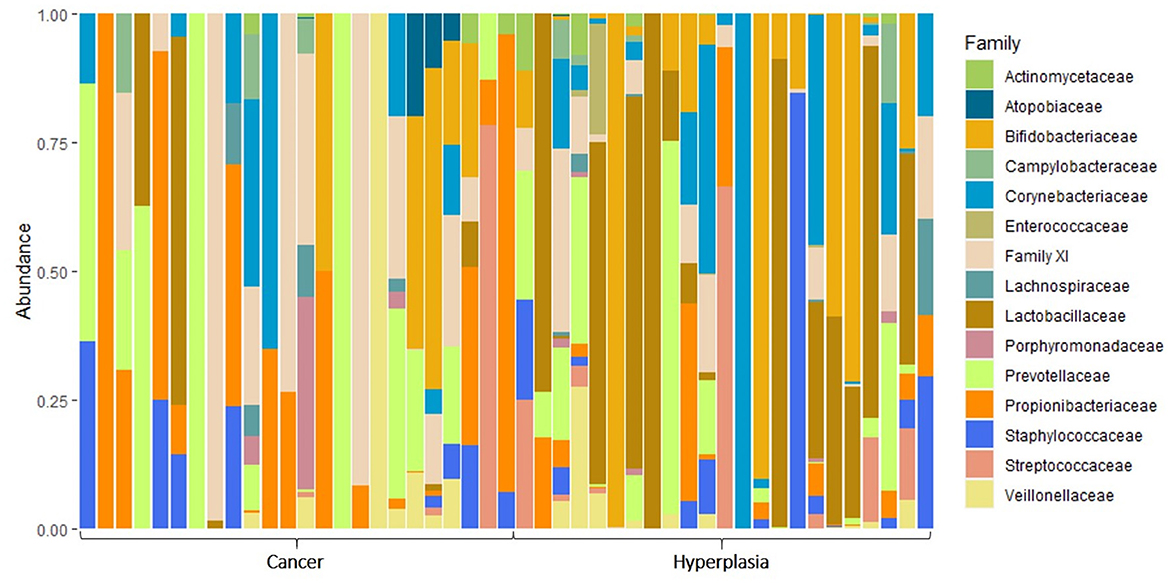
Figure 3. The taxonomic composition of uterine microbiota samples at the level of bacterial families.
The LEfSe method revealed that four intrauterine bacterial agents were enriched in EH group and by that contributed the most to the differences between the groups (Figure 4). These were Lactobacillus iners, and unknown species of the genera Lactobacillus, Enterococcus and Bifidobacterium genera.
Vaginal microbiota composition
In total 44 vaginal samples were obtained (excluding those with preanalytical flaws), of which 23 belonged to the EC group and 21 belonged to the EH group. Figure 5 shows the alpha diversity of the vaginal samples, according to Chao1, Shannon, and Simpson, respectively.
The intergroup diversity for the vaginal samples is presented in Figure 6. The PERMANOVA analysis revealed a p-value of 0.01. This indicates that the two sets of samples statistically differ from each other in terms of beta diversity.
Taxonomic analysis revealed the presence of 26 different classes of bacteria. Figure 7 illustrates the top-15 families. The most prevalent families were Prevotellaceae (Bacteroidota), Bifidobacteriaceae (Actinomycetota), Porphyromonadaceae (Bacteroidota), and Corynebacteriaceae (Actinomycetota).
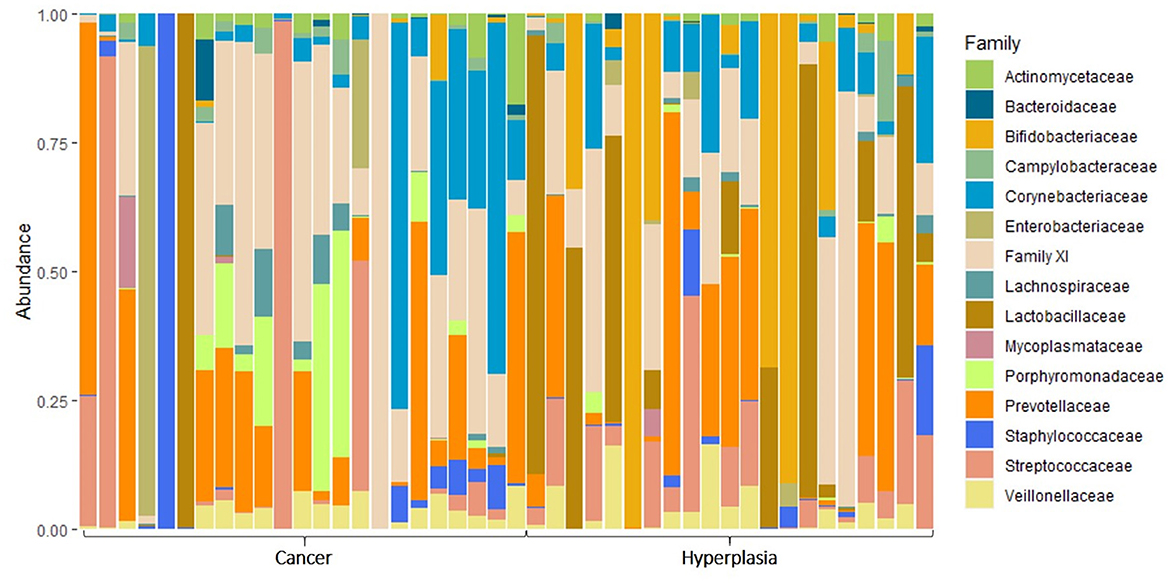
Figure 7. The taxonomic composition of vaginal microbiota samples at the level of bacterial families.
The LefSe method identified nine biomarkers, two of which were enriched in EH group—Lactobacillus (Bacillota) and Actinomycetaceae (Actinomycetota) and seven - in EC group (Figure 8). The latter included Porphyromonas spp, Prevotella corporis (both Bacteroidota); Streptococcus spp, Moryella spp, Peptococcus niger, Criibacterium spp and Clostridiales bacterium S5 A14a (all belong to Bacillota).
After excluding samples with low number of reads, 32 samples were analyzed pairwise (14 in Cancer group, 18 in Hyperplasia group). Paired samples with hyperplasia were more similar to each other than paired samples in the cancer group (Figure 9). However, p-value was 0.1315, therefore not allowing us to draw a definitive conclusion.
Discussion
In the current study we investigated differences in microbiota composition both in the vagina and the uterus between EH and EC patients. The results indicate the presence of a scarce but diverse microbial community within the uterus, as shown by several intragroup diversity parameters, the Chao1, Shannon, and Simpson index. Furthermore, both the vaginal and endometrial microbial composition per se differs between the groups with possible explanations and implications to be described below.
The existence of bacteria in the uterus has long been a controversial topic, with early research relying on culture-based methods suggesting the uterus was sterile. This may be due to the imperfections of the method, as well as the fact that some bacteria are known to grow poorly on artificial media. However, recent culture-independent studies using next-generation sequencing have revealed the presence of diverse microbial communities in the uterus, referred to as the uterine microbiota (21). In healthy women, the uterine microbiota appears to be low in biomass, but highly diverse, containing bacteria belonging mainly to the Lactobacillus (Bacillota), Prevotella (Bacteroidota), Gardnerella, and Atopobium (both belong to Actinomycetota) (22). The specific composition of the microbiota varies according to factors such as the menstrual cycle, parity and menopausal status (23). In postmenopausal women, the uterine mileue was enriched in Flavobacterium (Bacteroidota) compared to the cervicovaginal and anorectal microbiota (24). In contrast, in nulliparous women with abnormal uterine bleeding Prevotella, Fusobacterium and Jonquetella were the most abundant taxa (25). Infertility, endometriosis, and oncogynecological diseases are among the most studied areas in the context of microbial influence (26–28).
The uterus is an immunologically priveleged organ: it can accommodate tissue invasion by immunologically semiforeign placental cells, yet maintain mucosal immune defenses against ascending foreign organisms, and provide a system to efficiently clear the endometrial detritus that results from menstruation. The relations between the human body and the resident microbiota are an emerging scientific topic, which has not yet been described. Sometimes, the microbe-host interactions are simplified by saying that these two entities apply oppositely directed forces: The microbes strive to thwart host defense and multiply infinitely, while the host puts all efforts into eradicating the microorganisms. Although this might be acceptable or at least pragmatic for using this model for acute infections, the pattern of how the host interacts with the resident microbiota is not linear and is best described by the Nash dynamic equilibrium (29). In such a model, a host sequesters a microbe community within defined locus (should that be the enteric lumen or endometrial cavity) and does not favor their spread beyond these borders.
In our study members of both Porphyromonadaceae and Prevotellaceae families were among the most prevalent bacteria in the vagina and the uterus. This is in accordance with the previous studies. For example, the study by Caselli et al. showed that both Atopobium vaginae and Porphyromonas somerae induced the expression of pro-inflammatory cytokines in endometrial cells, which could have implications for the development of endometrial cancer (30). Based on sequencing of the 16S rDNA V3-V5 region from the reproductive tract, Walther-António et al. suggest that the detection of Atopobium vaginae and Porphyromonas sp. in the gynecologic tract combined with a vaginal pH greater than 5, had a sensitivity of 100% and specificity of 60% to detect EC (31). In a recent study by the same group (32) Porphyromonas was described as a robust biomarker of EC. Porphyromonas uenonis was more common in vaginal specimens from patients with both high-grade and low-grade endometrial cancers than from those with benign conditions (33). Wang et al. studied the microbiota in EC and adjacent tissue samples and found that several genera were enriched in malignant loci—Porphyromonas, Prevotella, Atopobium, Anaerococcus, Dialister, and Peptoniphilus (5). Li et al. provided evidence that tumor burden is associated with the presence of a specific endometrial microbiota, which is distinguished by the enrichment of Pelomonas and Prevotella in patients with EC (34). Transcriptomic data identified the upregulation of eight genes involved in pathways associated with fibrin degradation, including those with proteolysis and transcription factor activities. Hence, the authors concluded that Prevotella may promote fibrin degradation by inducing the expression of specific genes. It should be also noted, that Porphyromonas was previously described as carcinogenic within the digestive tract, due to its ability of inducing immune responses in the host (35).
In the current study, potential biomarkers for endometrial cancer have only been identified in the vaginal microbiota. Typically absent from the normal vaginal microbiota, including Porphyromonas, Prevotella corporis, Streptococcus, Moryella, Peptococcus niger, Criibacterium and Clostridiales bacterium S5 A14a. Notably, vaginal Porphyromonas and Prevotella, along with Bacteroides, Mycoplasma, Bacillus, Dialister, and Anaerococcus, have recently been identified as indicators of cervical cancer (36). Prevotella corporis, an established human pathogen, along with Prevotella bivia and Prevotella disiens, originates from the urogenital tract (37), but can also be an odontogenic pathogen (38). Prevotella corporis, an anaerobic bacterium rarely mentioned in the literature, was previously found to be associated with bacterial vaginosis, including in pregnant women (39), and has never been reported to be associated with EC until the current study. However, other Prevotella species and the Prevotella genus in general have previously been found to be associated with various gynecological cancers. Prevotella bivia was one of two species, along with Fusobacterium ulcerans, significantly more abundant in high grade compared to low grade endometrial carcinoma (33), and even earlier was found associated with cervical cancer (40). As previously shown, the abundance of vaginal Prevotella and Streptococcus was increased in the group of gynecological cancers (41). Although Prevotella spp. generally cause minimal proinflammatory epithelial activation, they may induce changes to the cellular physiology and integrity of the endometrial epithelium in a species-specific fashion. Prevotella spp. can form biofilms, alter the epithelial barrier, and impact the colonization of secondary colonizers (42).
Moryella, currently represented by a single species Moryella indoligenes, is a minor component of the vaginal microbiome (43), closely correlated with bacterial vaginosis (44). This bacterium, along with Prevotella, was previously described as being abundant in the vaginal samples from the females with EC (45). The association with gastrointestinal cancer was also reported (46).
Peptococcus niger, is an established human pathogen, previously found in a healthy vaginal ecosystem (47). This species has not previously been reported to be associated with gynecological cancers, however, it was previously identified in oral swabs in patients with potentially malignant disorders (48).
Criibacterium a genus with a single specie Criibacterium bergeronii isolated from human clinical samples, was shown to be enriched in the EC tissues, as mentioned in the work by Wang et al. (5). Criibacterium bergeronii, besides Streptococcus pyogenes, was the only other bacterial species enriched in idiopathic cutaneous ulcers in children after community-based mass treatment with azithromycin (49).
Clostridiales bacterium S5 A14a and Anaerovoracaceae family to which this bacterium probably belongs were found to be abundant in vaginal swabs in patients who had previous malignancies (50). In addition, Clostridiales bacterium S5-A14a was one of the taxa differentiating healthy control and post-treatment cervical swab samples in premenopausal women with squamous cell carcinoma of the cervix (51).
Intriguingly, the genes of Porphyromonas, Prevotella, Streptococcus, and Peptococcus niger can be classified as part of the estrobolome. The first three taxa can encode β-galactosidases, and Peptococcus niger can encode sulfatases and convert estrone sulfate to estrone, influencing active estrogen levels - the major risk-factor for EC (52, 53). In a recent study, for example, changes in gut Porphyromonas and Prevotella corporis correlated with postmenopausal hot flashes, which may also be related to their effect on estrogen levels (54).
Limitations of the study include the limited number of samples and differences in age and menopausal status between the groups. On the one hand, it reflects the natural distribution observed clinically, as patients with endometrial cancer tend to be older than those with hyperplasia (55, 56). In particular, Walsh et al. (32) also reported that postmenopausal status and age were significant modifiers of the microbiome composition. At the same time, we believe that, since the results of our research are consistent with previous studies, especially regarding Porphyromonas and Prevotella, menopause should be considered as only one of several factors that influence the outcome. The hypoestrogenism typically observed in postmenopause might potentially modulate the microbiota through interactions betwen estrogen and intraepithelial glycogen. The latter serve as a substrate for Lactobacilli, which act as antagonists to other bacteria through producing hydrogen peroxide and antimicrobial compounds. This interaction becomes even more complex when considering that multiple bacterial species can affect estrogen reabsorption and enterohepatic circulation by their β-glucuronidase and β-glucosidase enzymes that deconjugate estrogens (57, 58). Therefore, it can be hypothesized that increased activity of the deconjugating bacteria could lead to increased estrogen levels, a known risk factor for EC.
In conclusion, both vaginal and endometrial microbiota are different in terms of composition between patients with EH and EC. Several taxa were enriched in vaginal samples in patients with EC: Prevotella corporis, Porphyromonas, Streptococcus, Moryella, Criibacterium, Peptococcus niger and Clostridiales bacterium S5-A14a. We believe that these differentiating taxa found may be a hallmark of EC-associated vaginal dysbiosis. Our results therefore support previous findings suggesting differences in the composition of the genital tract microbiome, which could potentially be used for the diagnosis of EC, including the differential diagnosis of EH.
Data availability statement
The 16S rRNA data were deposited at the NCBI sequence read archive under the BioProject PRJNA1255609.
Ethics statement
The studies involving humans were approved by Almazov Centre Instituional Ethical Board. The studies were conducted in accordance with the local legislation and institutional requirements. The participants provided their written informed consent to participate in this study.
Author contributions
IG: Conceptualization, Data curation, Formal analysis, Funding acquisition, Investigation, Methodology, Project administration, Resources, Software, Supervision, Validation, Visualization, Writing – original draft, Writing – review & editing. EK: Funding acquisition, Writing – review & editing. EU: Resources, Writing – review & editing. ED: Investigation, Writing – review & editing. TP: Funding acquisition, Resources, Writing – review & editing. OV: Investigation, Writing – review & editing. AD: Investigation, Writing – review & editing. OK: Investigation, Writing – review & editing. EZ: Investigation, Writing – review & editing. ZR: Methodology, Writing – review & editing. MM: Investigation, Project administration, Resources, Writing – review & editing. SS: Conceptualization, Data curation, Formal analysis, Investigation, Methodology, Visualization, Writing – original draft.
Funding
The author(s) declare that financial support was received for the research and/or publication of this article. This work was financially supported by the Ministry of Science and Higher Education of the Russian Federation (Agreement No. 075-15-2022-301). Endometrial brushes were provided by Karolinska Institutet.
Conflict of interest
The authors declare that the research was conducted in the absence of any commercial or financial relationships that could be construed as a potential conflict of interest.
Generative AI statement
The author(s) declare that no Gen AI was used in the creation of this manuscript.
Publisher's note
All claims expressed in this article are solely those of the authors and do not necessarily represent those of their affiliated organizations, or those of the publisher, the editors and the reviewers. Any product that may be evaluated in this article, or claim that may be made by its manufacturer, is not guaranteed or endorsed by the publisher.
References
1. Cronin KA, Scott S, Firth AU, Sung H, Henley SJ, Sherman RL, et al. Annual report to the nation on the status of cancer, part 1: National cancer statistics. Cancer. (2022) 128:4251–84. doi: 10.1002/cncr.34479
2. Bokhman JV. Two pathogenetic types of endometrial carcinoma. Gynecol Oncol. (1983) 15:10–7. doi: 10.1016/0090-8258(83)90111-7
3. Kandoth C, Schultz N, Cherniack A, Akbani R, Liu Y, Shen H, et al. Cancer genome atlas research N. integrated genomic characterization of endometrial carcinoma. Nature. (2013) 497:67–73. doi: 10.1038/nature12113
4. Łaniewski P, Ilhan ZE, Herbst-Kralovetz MM. The microbiome and gynaecological cancer development, prevention and therapy. Nat Rev Urol. (2020) 17:232–50. doi: 10.1038/s41585-020-0286-z
5. Wang L, Yang J, Su H, Shi L, Chen B, Zhang S. Endometrial microbiota from endometrial cancer and paired pericancer tissues in postmenopausal women: differences and clinical relevance. Menopause. (2022) 29:1168. doi: 10.1097/GME.0000000000002053
6. Møller BR, Kristiansen FV, Thorsen P, Frost L, Mogensen SC. Sterility of the uterine cavity. Acta obstetricia et gynecologica Scandinavica. (1995) 74:216–9. doi: 10.3109/00016349509008942
7. Ansbacher R, Boyson WA, Morris JA. Sterility of the uterine cavity. Am J Obstet Gynecol. (1967) 99:394–6. doi: 10.1016/S0002-9378(16)34549-5
8. Chen C, Song X, Wei W, Zhong H, Dai J, Lan Z, et al. The microbiota continuum along the female reproductive tract and its relation to uterine-related diseases. Nat Commun. (2017) 8:875. doi: 10.1038/s41467-017-00901-0
9. García-Velasco JA, Budding D, Campe H, Malfertheiner SF, Hamamah S, Santjohanser C, et al. The reproductive microbiome-clinical practice recommendations for fertility specialists. Reprod Biomed Online. (2020) 41:443–53. doi: 10.1016/j.rbmo.2020.06.014
10. Punzón-Jiménez P, Labarta E. The impact of the female genital tract microbiome in women health and reproduction: a review. J Assist Reprod Genet. (2021) 38:2519–41. doi: 10.1007/s10815-021-02247-5
11. Chalif J, Wang H, Spakowicz D, Quick A, Arthur EK, O'Malley D, et al. The microbiome and gynecologic cancer: cellular mechanisms and clinical applications. Int J Gynecol Cancer. (2023) 34:317–27. doi: 10.1136/ijgc-2023-004894
12. Verstraelen H, Vilchez-Vargas R, Desimpel F, Jauregui R, Vankeirsbilck N, Weyers S, et al. Characterisation of the human uterine microbiome in non-pregnant women through deep sequencing of the V1-2 region of the 16S rRNA gene. PeerJ. (2016) 4:e1602. doi: 10.7717/peerj.1602
13. Andrews S. FastQC: A Quality Control Tool for High Throughput Sequence Data. Cambridge: Babraham Bioinformatics, Babraham Institute. (2010).
14. Ewels P, Magnusson M, Lundin S, Käller M. MultiQC: summarize analysis results for multiple tools and samples in a single report. Bioinformatics. (2016) 32:3047–8. doi: 10.1093/bioinformatics/btw354
15. Bolger AM, Lohse M, Usadel B. Trimmomatic: a flexible trimmer for Illumina sequence data. Bioinformatics. (2014) 30:2114–20. doi: 10.1093/bioinformatics/btu170
16. Callahan BJ, McMurdie PJ, Rosen MJ, Han AW, Johnson AJA, Holmes SP. DADA2: High-resolution sample inference from Illumina amplicon data. Nat Methods. (2016) 13:581–3. doi: 10.1038/nmeth.3869
17. Mirdita M, Steinegger M, Breitwieser F, Söding J, Levy Karin E. Fast and sensitive taxonomic assignment to metagenomic contigs. Bioinformatics. (2021) 37:3029–31. doi: 10.1093/bioinformatics/btab184
18. McMurdie PJ, Holmes S. phyloseq: an R package for reproducible interactive analysis and graphics of microbiome census data. PLoS ONE. (2013) 8:e61217. doi: 10.1371/journal.pone.0061217
19. Cao Y, Dong Q, Wang D, Zhang P, Liu Y, Niu C. microbiomeMarker: an R/Bioconductor package for microbiome marker identification and visualization. Bioinformatics. (2022) 38:4027–9. doi: 10.1093/bioinformatics/btac438
20. Oksanen J. Vegan: Community Ecology Package. (2010). Available online at: https://vegan.r-forge.r-project.org/ (accessed September 1, 2024).
21. Baker JM, Chase DM, Herbst-Kralovetz MM. Uterine microbiota: residents, tourists, or invaders? Front Immunol. (2018) 9:208. doi: 10.3389/fimmu.2018.00208
22. Garcia-Grau I, Simon C, Moreno I. Uterine microbiome—low biomass and high expectations. Biol Reprod. (2019) 101:1102–14. doi: 10.1093/biolre/ioy257
23. Agostinis C, Mangogna A, Bossi F, Ricci G, Kishore U, Bulla R. Uterine immunity and microbiota: a shifting paradigm. Front Immunol. (2019) 10:2387. doi: 10.3389/fimmu.2019.02387
24. Gressel GM, Usyk M, Frimer M, Kuo D, Burk RD. Characterization of the endometrial, cervicovaginal and anorectal microbiota in post-menopausal women with endometrioid and serous endometrial cancers. PLoS ONE. (2021) 16:e0259188. doi: 10.1371/journal.pone.0259188
25. Pelzer ES, Willner D, Buttini M, Huygens F. A role for the endometrial microbiome in dysfunctional menstrual bleeding. Antonie Van Leeuwenhoek. (2018) 111:933–43. doi: 10.1007/s10482-017-0992-6
26. Wei W, Zhang X, Tang H, Zeng L, Wu R. Microbiota composition and distribution along the female reproductive tract of women with endometriosis. Ann Clin Microbiol Antimicrob. (2020) 19:1–8. doi: 10.1186/s12941-020-00356-0
27. Chen W, Wei K, He X, Wei J, Yang L, Li L, et al. Identification of uterine microbiota in infertile women receiving in vitro fertilization with and without chronic endometritis. Front Cell Dev Biol. (2021) 9:693267. doi: 10.3389/fcell.2021.693267
28. Han M, Wang N, Han W, Ban M, Sun T, Xu J. Vaginal and tumor microbiomes in gynecological cancer. Oncol Lett. (2023) 25:1–11. doi: 10.3892/ol.2023.13739
29. Blaser MJ, Kirschner D. The equilibria that allow bacterial persistence in human hosts. Nature. (2007) 449:843–9. doi: 10.1038/nature06198
30. Caselli E, Soffritti I, D'Accolti M, Piva I, Greco P, Bonaccorsi G. Atopobium vaginae and Porphyromonas somerae induce proinflammatory cytokines expression in endometrial cells: a possible implication for endometrial cancer? Cancer Managem Res. (2019) 11:8571–5. doi: 10.2147/CMAR.S217362
31. Walther-António MR, Chen J, Multinu F, Hokenstad A, Distad TJ, Cheek EH, et al. Potential contribution of the uterine microbiome in the development of endometrial cancer. Genome Med. (2016) 8:1–15. doi: 10.1186/s13073-016-0368-y
32. Walsh DM, Hokenstad AN, Chen J, Sung J, Jenkins GD, Chia N, et al. Postmenopause as a key factor in the composition of the Endometrial Cancer Microbiome (ECbiome). Sci Rep. (2019) 9:19213. doi: 10.1038/s41598-019-55720-8
33. Hakimjavadi H, George SH, Taub M, Dodds LV, Sanchez-Covarrubias AP, Huang M, et al. The vaginal microbiome is associated with endometrial cancer grade and histology. Cancer Res Commun. (2022) 2:447–55. doi: 10.1158/2767-9764.CRC-22-0075
34. Li C, Gu Y, He Q, Huang J, Song Y, Wan X, et al. Integrated analysis of microbiome and transcriptome data reveals the interplay between commensal bacteria and fibrin degradation in endometrial cancer. Front Cell Infect Microbiol. (2021) 11:748558. doi: 10.3389/fcimb.2021.748558
35. Sayehmiri F, Sayehmiri K, Asadollahi K, Soroush S, Bogdanovic L, Jalilian FA, et al. The prevalence rate of Porphyromonas gingivalis and its association with cancer: A systematic review and meta-analysis. Int J Immunopathol Pharmacol. (2015) 28:160–7. doi: 10.1177/0394632015586144
36. Zhang W, Yin Y, Jiang Y, Yang Y, Wang W, Wang X, et al. Relationship between vaginal and oral microbiome in patients of human papillomavirus (HPV) infection and cervical cancer. J Transl Med. (2024) 22:396. doi: 10.1186/s12967-024-05124-8
37. Könönen E, Gursoy UK. Oral Prevotella species and their connection to events of clinical relevance in gastrointestinal and respiratory tracts. Front Microbiol. (2022) 12:798763. doi: 10.3389/fmicb.2021.798763
38. Ciodaro F, Gazia F, Galletti B, Galletti F. Hyperbaric oxygen therapy in a case of cervical abscess extending to anterior mediastinum, with isolation of Prevotella corporis. BMJ Case Reports CP. (2019) 12:e229873. doi: 10.1136/bcr-2019-229873
39. Hillier SL. Diagnostic microbiology of bacterial vaginosis. Am J Obstet Gynecol. (1993) 169:455–9. doi: 10.1016/0002-9378(93)90340-O
40. Mikamo H, Izumi K, Ito K, Watanabe K, Ueno K, Tamaya T. Internal bacterial flora of solid uterine cervical cancer. Kansenshogaku Zasshi. (1993) 67:11. doi: 10.11150/kansenshogakuzasshi1970.67.1057
41. Han M, Wang N, Han W, Liu X, Sun T, Xu J. Highly specific vaginal microbiome signature for gynecological cancers. Open Life Sci. (2024) 19:20220850. doi: 10.1515/biol-2022-0850
42. Ilhan ZE, Łaniewski P, Tonachio A, Herbst-Kralovetz MM. Members of Prevotella genus distinctively modulate innate immune and barrier functions in a human three-dimensional endometrial epithelial cell model. J Infect Dis. (2020) 222:2082–92. doi: 10.1093/infdis/jiaa324
43. Roachford OSE, Alleyne AT, Nelson KE. Insights into the vaginal microbiome in a diverse group of women of African, Asian and European ancestries. PeerJ. (2022) 10:e14449. doi: 10.7717/peerj.14449
44. Yuan D, Chen W, Qin J, Shen D, Qiao Y, Kong B. Associations between bacterial vaginosis, candida vaginitis, trichomonas vaginalis, and vaginal pathogenic community in Chinese women. Am J Transl Res. (2021) 13:7148.
45. Tsementzi D, Pena-Gonzalez A, Bai J, Hu YJ, Patel P, Shelton J, et al. Comparison of vaginal microbiota in gynecologic cancer patients pre-and post-radiation therapy and healthy women. Cancer Med. (2020) 9:3714–24. doi: 10.1002/cam4.3027
46. Wang M, Liu Z, Xin Y. The role of the gut microbiota in gastric cancer: The immunoregulation and immunotherapy. Front Immunol. (2023) 14:1183331. doi: 10.3389/fimmu.2023.1183331
47. Mills BB. Vaginitis: beyond the basics. Obstet Gynecol Clini. (2017) 44:159–77. doi: 10.1016/j.ogc.2017.02.010
48. Pignatelli P, Curia MC, Tenore G, Bondi D, Piattelli A, Romeo U. Oral bacteriome and oral potentially malignant disorders: a systematic review of the associations. Arch Oral Biol. (2024). 160:105891. doi: 10.1016/j.archoralbio.2024.105891
49. Griesenauer B, Xing Y, Fortney KR, Gao X, González-Beiras C, Nelson DE, et al. Two Streptococcus pyogenes emm types and several anaerobic bacterial species are associated with idiopathic cutaneous ulcers in children after community-based mass treatment with azithromycin. PLOS Negl Trop Dis. (2022) 16:e0011009. doi: 10.1371/journal.pntd.0011009
50. Neiterman RH, Salman L, Meisel-Sharon S, Noy TB, Carmel RR, Hantisteanu S, et al. PR052/# 439 Distinct vaginal microbiome ovarian cancer patients-a possible screening and prognostic biomarker? BMJ Special J. (2023) 33:A60–1. doi: 10.1136/ijgc-2023-IGCS.93
51. Zeber-Lubecka N, Kulecka M, Lindner B, Krynicki R, Paziewska A, Nowakowski A, et al. Increased diversity of a cervical microbiome associates with cervical cancer. Front Oncol. (2022) 12:1005537. doi: 10.3389/fonc.2022.1005537
52. Kwa M, Plottel CS, Blaser MJ, Adams S. The intestinal microbiome and estrogen receptor-positive female breast cancer. J Nat Cancer Institute. (2016) 108:djw029. doi: 10.1093/jnci/djw029
53. Cotton S, Clayton CA, Tropini C. Microbial endocrinology: the mechanisms by which the microbiota influences host sex steroids. Trends Microbiol. (2023) 31:1131–42. doi: 10.1016/j.tim.2023.03.010
54. Kahleova H, Holtz DN, Strom N, La Reau A, Kolipaka S, Schmidt N, et al. A dietary intervention for postmenopausal hot flashes: a potential role of gut microbiome. An exploratory analysis. Complement Therap Med. (2023) 79:103002. doi: 10.1016/j.ctim.2023.103002
55. Reed SD, Newton KM, Clinton WL, Epplein M, Garcia R, Allison K, et al. Incidence of endometrial hyperplasia. Am J Obstet Gynecol. (2009) 200:678–e1. doi: 10.1016/j.ajog.2009.02.032
56. Lurie G, Gaudet M, Spurdle A, Carney M, Wilkens L, Yang H, et al. Epidemiology of Endometrial Cancer Consortium (E2C2): the obesity-associated polymorphisms FTO rs9939609 and MC4R rs17782313 and endometrial cancer risk in non-Hispanic white women. PLoS ONE. (2011) 6:e16756. doi: 10.1371/journal.pone.0016756
57. McIntosh FM, Maison N, Holtrop G, Young P, Stevens VJ, Ince J, et al. Phylogenetic distribution of genes encoding β-glucuronidase activity in human colonic bacteria and the impact of diet on faecal glycosidase activities. Environ Microbiol. (2012) 14:1876–87. doi: 10.1111/j.1462-2920.2012.02711.x
Keywords: endometrial cancer, microbiota, endometrial microbiota, endometrial hyperplasia, carcinogenesis, vaginal microbiota
Citation: Govorov I, Komlichenko E, Ulrikh E, Dikareva E, Pervunina T, Vazhenina O, Dzharbaeva A, Kalinina O, Zaikova E, Razumova Z, Mints M and Sitkin S (2025) The microbiome in endometrial cancer: vaginal milieu matters. Front. Med. 12:1533344. doi: 10.3389/fmed.2025.1533344
Received: 02 December 2024; Accepted: 11 April 2025;
Published: 09 May 2025.
Edited by:
Kunqi Chen, Fujian Medical University, ChinaReviewed by:
Elizabeth García-Gómez, Secretaría de Ciencia Tecnología e Innovación, MexicoBrunella Perfetto, University of Campania Luigi Vanvitelli, Italy
Copyright © 2025 Govorov, Komlichenko, Ulrikh, Dikareva, Pervunina, Vazhenina, Dzharbaeva, Kalinina, Zaikova, Razumova, Mints and Sitkin. This is an open-access article distributed under the terms of the Creative Commons Attribution License (CC BY). The use, distribution or reproduction in other forums is permitted, provided the original author(s) and the copyright owner(s) are credited and that the original publication in this journal is cited, in accordance with accepted academic practice. No use, distribution or reproduction is permitted which does not comply with these terms.
*Correspondence: Igor Govorov, Z292b3Jvdl9pZUBhbG1hem92Y2VudHJlLnJ1
 Igor Govorov
Igor Govorov Eduard Komlichenko1,3
Eduard Komlichenko1,3